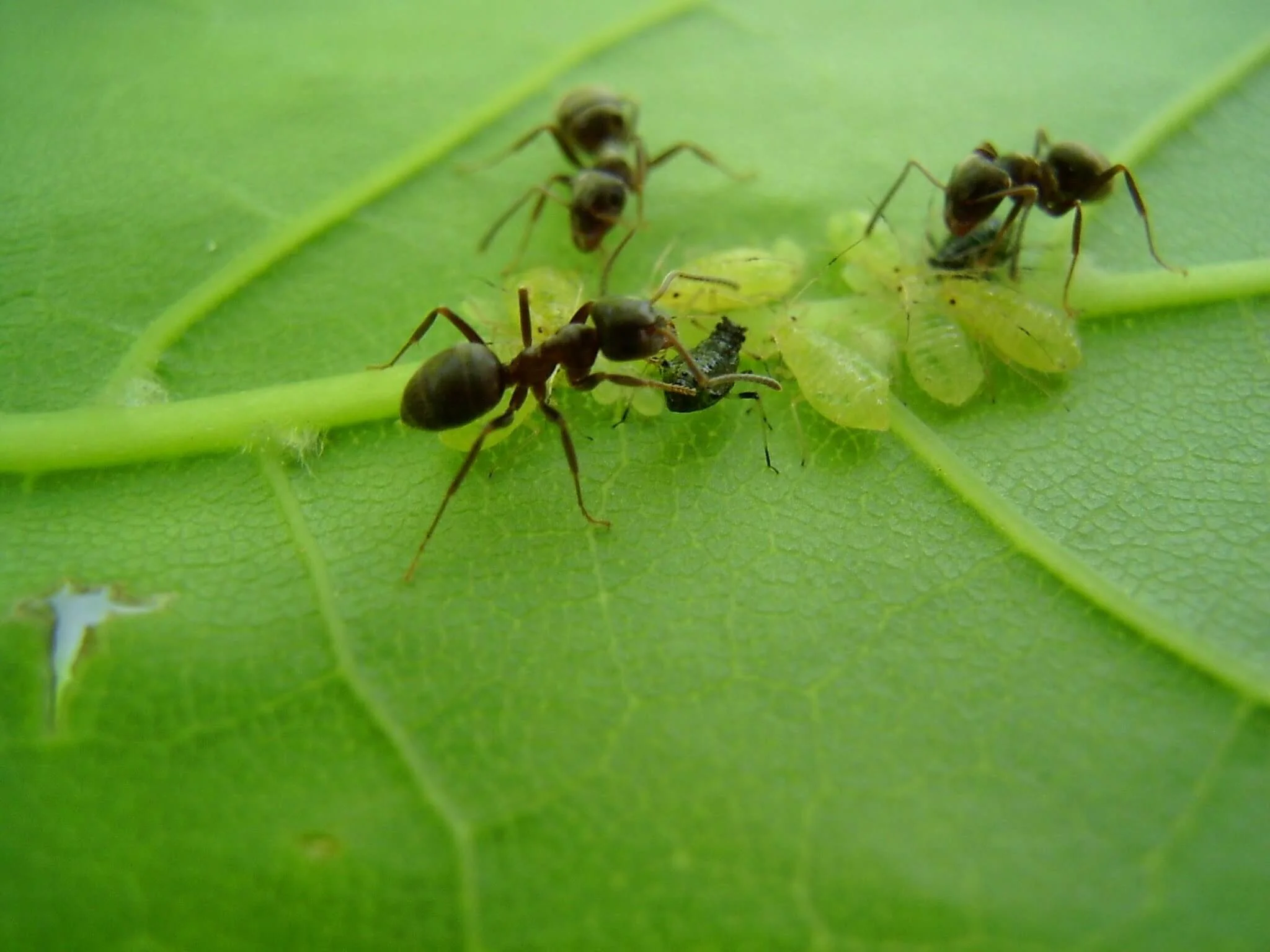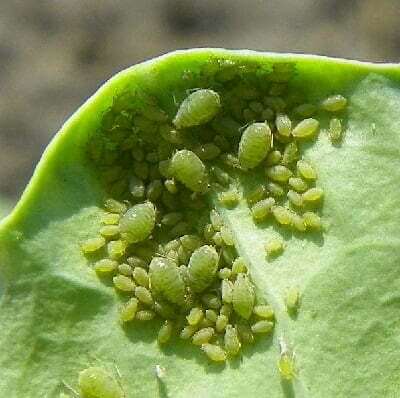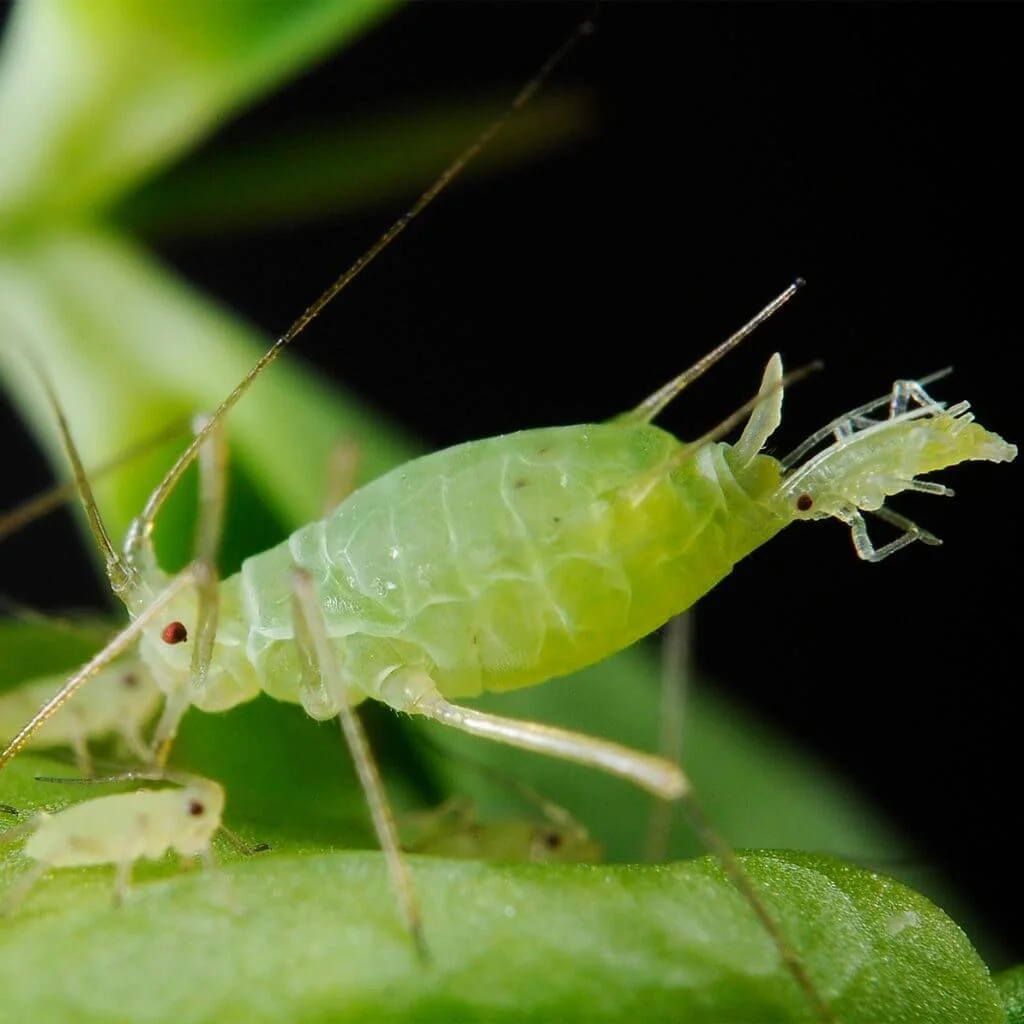Want to Know How To Get Rid Of Ahids?
Read our article here: How To Get Rid Of Ahids
These popular little piercing pests are known as sap sucking insects and are world renowned for their destructive capability in agriculture and forestry.
The little blood suckers have soft pear shaped bodies, belong to the superfamily Aphidoidea and come in an array of sizes and species.
A dreaded sight for many a gardener they appear in a range of colours from light and dark green, black and brown to pale yellows, greys and even translucent.
Though considered a pest, the truth is Aphids only cause notable damage when present in masses. A healthy garden would in fact benefit from these little lice, you see a healthy garden needs a healthy ecosystem and Aphids are a tasty treat to lady birds, praying mantis, parasitic wasps and many other beneficial insects. You can’t expect these favourites to thrive when you forcefully eradicate their favourite foods. The reality is, your garden needs these insects, without them all but a few of the benificial’s will inevitably migrate from your garden, leaving your plants to deteriorate in a chemical and pesticide warfare. It is thus your job as a gardener to monitor pest populations and ensure they don’t overpopulate as this is when they become the badies. Interestingly though the Aphid have natural allies, namely ants. Ants forcefully protect the aphids from our natural beneficial friends in exchange for a sweet treat in the form of a substance called honeydew, this is excreted by the aphids when tickled by the antennae of the ants. This phenomenon and is known as
a mutualistic relationship.

Why Aphids are a problem:
Large numbers of aphids are a problem as they suck sap from tender new growth, flower buds and the undersides of leaves. This leads to malformed flowers and foliage and poor growth. Furthermore these sap suckers transport viruses and disease as they move from one plant to another.
Also a fungus called sooty mold often grows on the honeydew deposits of the Aphids leading
to further deteration and an unappealing plant.

Identify and locate:
Identify Aphids by looking for the colours mentioned above and find them by inspecting new growth, flower buds and the undersides of foliage. Aphids normally appear in groups or colonies and are easily noticed with the appearance of ants and the excreted honeydew substance.
 Prevention:
Prevention:

Treatment:
To combat overgrown Aphid populations harmful chemical, pest and insecticides are not the way to go. Not only do they eradicate unnecessary numbers of these creatures but they kill vast numbers of other surrounding organisms many of which are beneficial.
Manny organic remedies and sprays are available on the market. There are also many recipes to produce your own remidies, these sprays often contain canola oil and garlic or fatty acids which
only kill soft bodied insects so rest assured your ladybirds and other beneficial’s will be safe.
Tomato Leaf Spray:Tomato leaves release compounds called alkaloids when chopped, the following recipe is toxic to aphids but not to humans and plants. Garlic Oil Spray:Finley chop 3-4 cloves of garlic and add to 2 teaspoons of oil, allow to marinate for at least 24 hours. Now strain out the garlic pieces and add the oil to 2 cups (500ml) of water, add 1- 2 teaspoons of dishwashing liquid and you have yourself a homemade concentrate toxic to aphids. Dilute with one cup of water to every 2 table spoons of concentrate and funnel into a spray bottle, Apply on the entire plant focusing on the undersides of leaves, new growth and on the aphid infestation. This mixture however is a non-selective insecticide meaning it will eradicate all insects. It suggested to apply a small amount to one spot onnt the plant, wait a day or 2 and inspect for yellowing to strong concentrate may damage some plants in this event further dilute before applying to the entire plant. |
Remember:Selective pest and insecticides are still a step better than broad spectrum, as long as you are sure you have correctly identified the pest problem. Should you still choose to implement chemical inhibitors and pesticides ensure to strictly adhere to the dosage and safety requirements on the packaging. |
What to Know More About Aphids?
Here are some good resources
HOW DO I GET RID OF APHIDS ON MY GARDEN GREENS?
COMMON GARDEN PESTS AND HOW TO GET RID OF THEM




